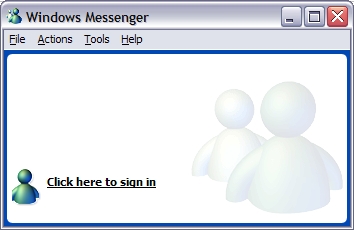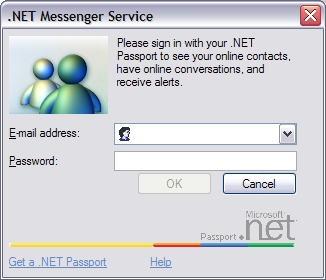What is Instant Messaging?Instant Messaging (IM) is a way to instantly send a message to another internet user. There are many advantages, but also many potential problems and issues to be aware of. The challenge for business environments is to find a valid reason for Instant Messaging. It can be a handy way for staff to communicate between offices or locations quickly, whereas email is slower and the telephone is costly. But it can also introduce a “toy” to a business environment where people should be working. How Does It Work?- First, you need to install an Instant Messaging client. There are various programs, such as Windows Messenger, MSN Messenger (both by Microsoft), AIM (AOL Instant Messenger) and Yahoo! Messenger. There are many others.
At the time of writing, the main services are not interoperable, so typically you can only message users on the same service. Fanatical IM users may need to use several IM clients simultaneously. Generally the most accessible IM client is Windows Messenger as it is included with modern versions of Windows or can be obtained easily from http://windowsupdate.microsoft.com.
- Next, you need an account with the IM service provider. Windows Messenger uses Microsoft Passport, so if you already have a Passport or Hotmail account, you can use that. Other providers have their own account system.
- When you log in to the IM client with your account details, you are added to a gigantic online directory that lets other people know you are online. Typically there are ways to ensure your status is visible only to the people you choose, so you're unlikely to suddenly receive communications from millions of internet users. The usual procedure is to add users known to you to an address book.
What's the Difference between Instant Messaging and Email?| Instant Messaging | Email | | More or less instantaneous. | Can take minutes or hours to arrive | | Must be online to receive messages. | Messages can queue at the server/ISP if recipient is not online. | | Best suited to short, real-time conversations. | Best as letter-writing replacement or for lengthier discussions over a period of time. | | Not really designed to be archived. | Well suited as an archive of business correspondence. | | Only accepts messages from people known to you. | Accepts messages from everyone. |
How Safe Is It?IM has the same risks as email and web browsing, namely, malicious content can be transmitted as easily as legitimate files, and faults/vulnerabilities in the IM client can be exploited by hackers. However, mitigating these risks is the same as mitigating against the risks inherent in email: use virus protection on the workstation, ensure the latest patches are installed for the IM client and the operating system, and be vigilant about files that are sent to you or suspicious requests for information. Other IssuesHowever, there are other issues associated with IM which go beyond viruses, and they are most prevalent in a business environment rather than the home environment: - IM is difficult if not impossible to manage centrally. It is basically peer-to-peer, meaning each IM client communicates with other IM clients, and there is no central control in a business network. Email, on the other hand, can be controlled using back-end email servers, which can impose virus scanning, spam and attachment filtering, and policies such as size limits. Web browsing can also be controlled by central policies. There are ways to deploy your own IM system in a business network, but this is generally complicated and expensive. Typically, it is most convenient to use internet-enabled IM.
- Conversations conducted over IM are generally discarded, whereas in email they are stored and archived. In a business environment, correspondence between you, your suppliers and clients should be retained so email is a more natural medium for this.
- Transferring files over IM can use large amounts of LAN and internet traffic, which slows services for other uses, and can be costly.
- Transferring copyrighted files such as music files may create a legal risk for the business.
- Employees can be distracted by constant popup messages.
Using Windows Messenger- If Windows Messenger is not already installed on your system, it can be obtained by visiting http://windowsupdate.microsoft.com.
- Upon running Windows Messenger you will see:
 - Click Click here to sign in and you will be presented with the login dialog:
 Enter your Passport credentials, or, to create a new account, click Get a .NET Passport. - Once you are signed in you can send files, send messages and many other functions.
To send a message, choose Actions, Send an Instant Message. To transfer a file, choose Actions, Send a File or Photo.
|